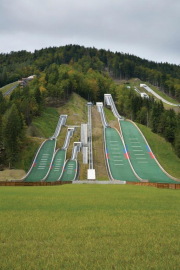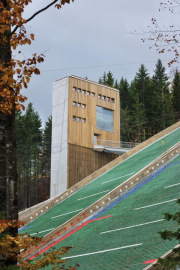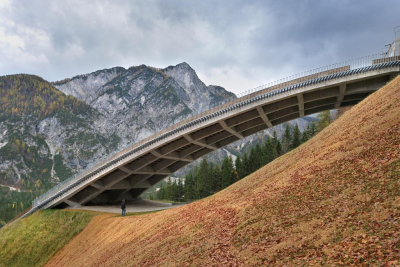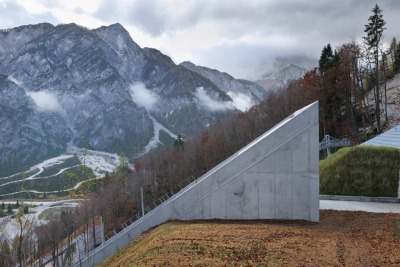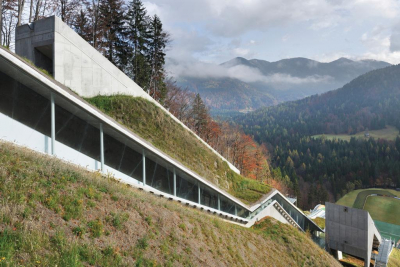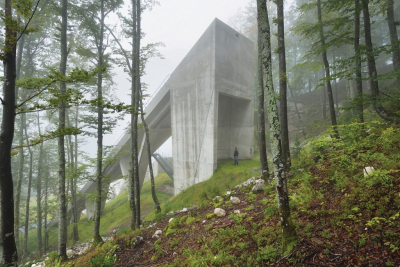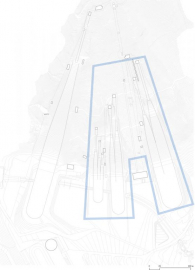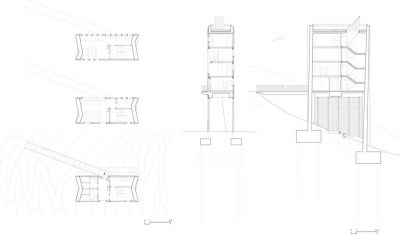Ski Jumps Planica
Ski jumps Planica sport facilities in harmony with the natural environment
The main aspect of the design is the profound relationship between the construction, the constructed site, and the natural surroundings. As Planica lies at the forefoot of the Slovenian largest natural protection area, as one of the most exciting entry points to the Triglav National Park, the large sport facilities should somehow evoke their position. The precise planning of topography, the systematic selection and reduction of material, bold shapes and forms should line themselves with the exciting silhouette of the mountains, and the calmness of the pine and beech forest. Two posters were designed to show two contrasting design aspects, i.e. of winter, and late summer.
The main aspect of the design is the profound relationship between the construction, the constructed site, and the natural surroundings. As Planica lies at the forefront of the Slovenian largest natural protection area, as one of most exciting entry points to the Triglav National Park, the large sport facilities should somehow evoke their own position. The precise planning of topography, the systematic selection and reduction of material, bold shapes and forms should line themselves with the exciting silhouette of the mountains and the calmness of the pine and beech forest. The project works on many levels and relationships: solid versus soft, resistant versus ephemeral, cold versus warm, monumental versus intimate.
It reflects the changes in seasons, from the cold and sharp mountains referred to in the simple geometry of the concrete structures, to the revealing colours of the late summer, when the sensation of wooden details is exposed. For this reason, we designed two posters to show the jury the duality of the project. Ski jumps are normally designed to facilitate major competitions with enormous infrastructure and logistics. When more than 15,000 people descend upon this fragile valley, the form of the architecture ceases to exists, and its function plays the crucial role. But in everyday situations, when a few young ski jumpers come there to train in solitude, the architecture s simplicity, and respect towards the site and robustness is awoken again.
The selection of materials is reduced to concrete for the main structure, and wood for the infills and the parts which relate to the human body. Steel functions as a technical joint and a bridge, structurally subordinated to the rest. The form is not extravagant, as it often is when it comes to the design of ski jumps. Local materials, manpower and knowledge were taken into consideration during the design and construction. The final coating of materials is selected in such a manner that little or no maintenance is required. The vital and elementary parts of the structure are durable and long lasting; pieces which are subject to wear are small and replaceable with simple tools and materials.

